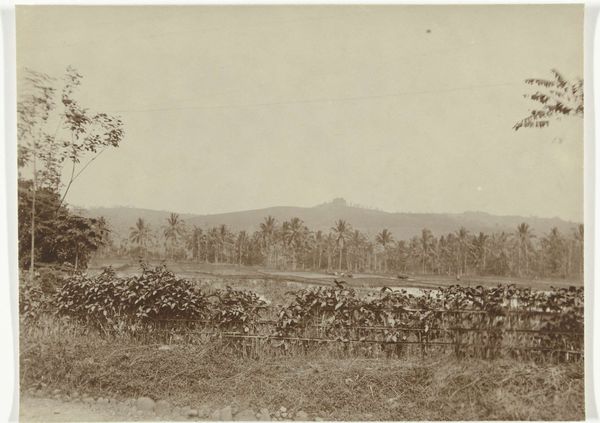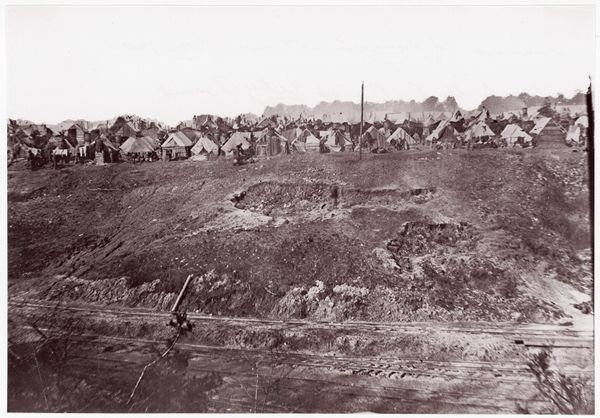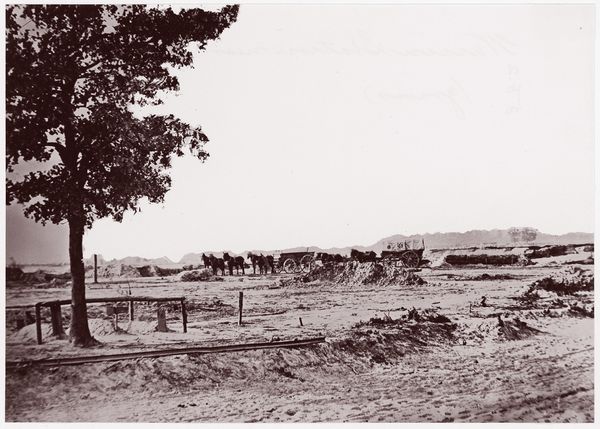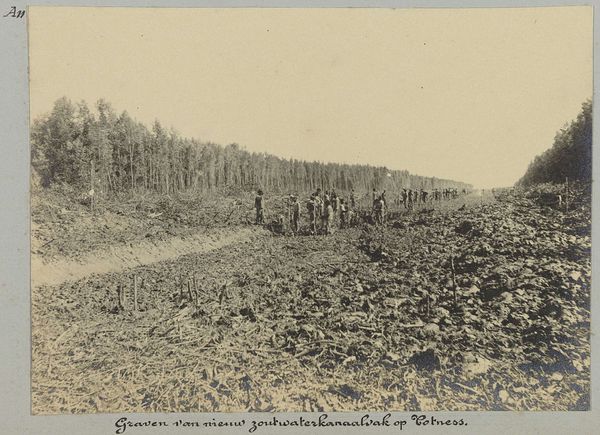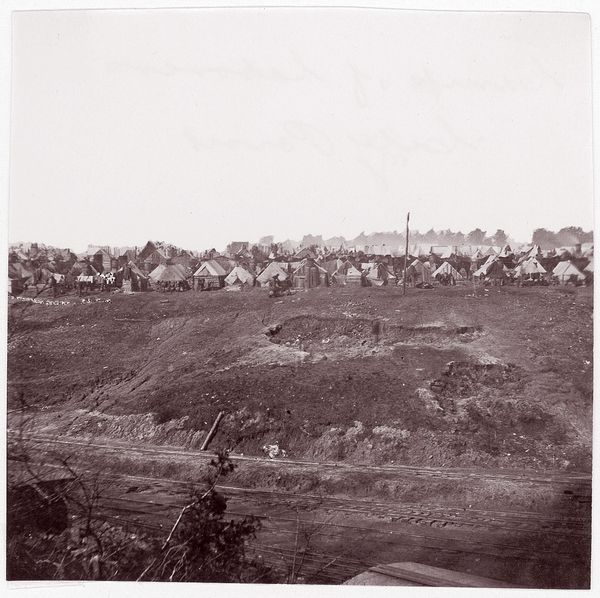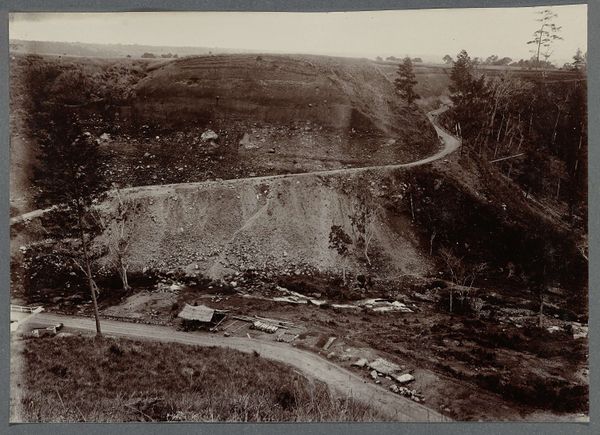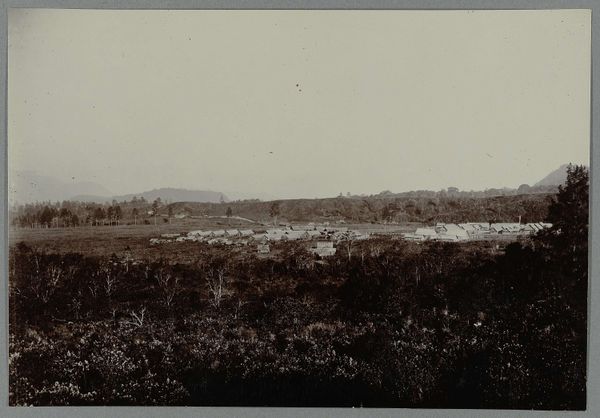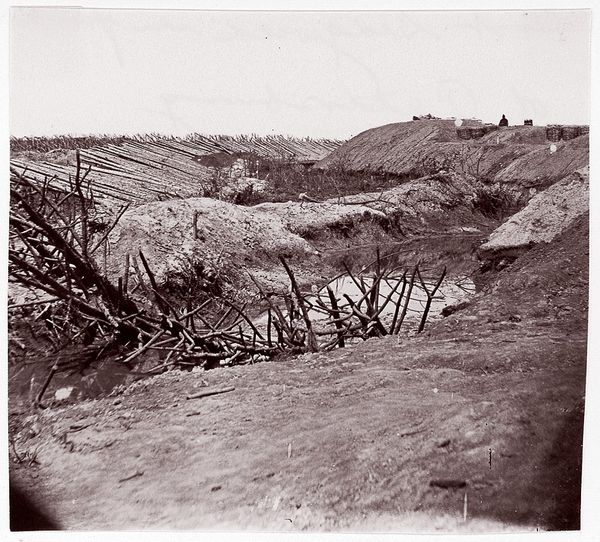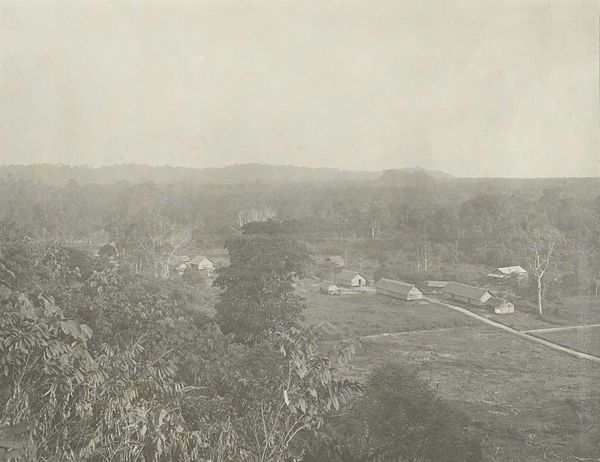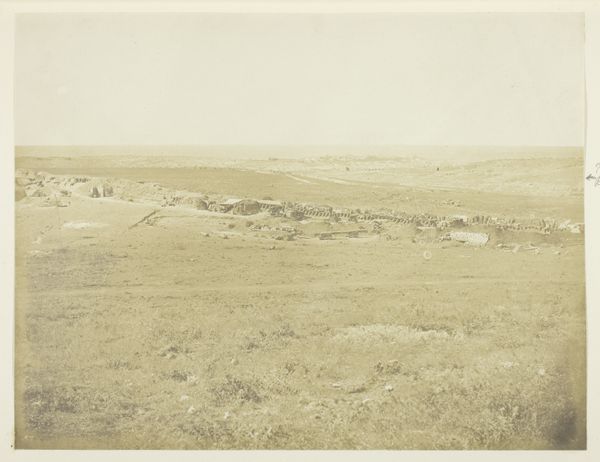![[Camp of Confederate Prisoners at Belle Plain Landing, Virginia, Captured with Johnson's Division] by Timothy O'Sullivan](/_next/image?url=https%3A%2F%2Fd2w8kbdekdi1gv.cloudfront.net%2FeyJidWNrZXQiOiAiYXJ0ZXJhLWltYWdlcy1idWNrZXQiLCAia2V5IjogImFydHdvcmtzL2YzMmNiMjRlLTM4ZDktNDViYi1hNjcyLTcwZmZjN2ZmZjkzZS9mMzJjYjI0ZS0zOGQ5LTQ1YmItYTY3Mi03MGZmYzdmZmY5M2VfZnVsbC5qcGciLCAiZWRpdHMiOiB7InJlc2l6ZSI6IHsid2lkdGgiOiAxOTIwLCAiaGVpZ2h0IjogMTkyMCwgImZpdCI6ICJpbnNpZGUifX19&w=3840&q=75)
[Camp of Confederate Prisoners at Belle Plain Landing, Virginia, Captured with Johnson's Division] 1864
0:00
0:00
Copyright: Public Domain
Curator: Timothy O'Sullivan’s gelatin-silver print, created in 1864, offers a sweeping view titled *Camp of Confederate Prisoners at Belle Plain Landing, Virginia, Captured with Johnson's Division.* What strikes you most upon seeing this, Editor? Editor: It's the overwhelming sense of bleakness. The photograph conveys the somber mood. An almost dystopian vision stretches before us; the tents dot the landscape like blemishes, a stark visual reminder of human suffering. Curator: It is indeed a potent image. O’Sullivan's work goes beyond simply documenting the Civil War; it delves into the lived realities of its participants, the Confederate prisoners, but, as an abolitionist myself, it is impossible not to be aware of their role in perpetuating the enslavement and the dehumanization of others. The sheer scale of the camp highlights the vast human cost of the conflict, as well as its entanglement with ideologies of racial oppression. Editor: Exactly. O'Sullivan's composition—the high vantage point, the receding horizon—contributes to this feeling of anonymity, of the individual swallowed by the enormity of the situation. One can't ignore the visual analogy with agrarian landscapes of the 19th-century, and this complicates my feelings, giving it the uncanny air of the familiar turned into the tragic. I think that many who were free or escaped from enslavement viewed the end of the civil war as anything but tragic. Curator: It also prompts us to reflect on the power dynamics inherent in image-making itself. O'Sullivan, as a photographer for the Union Army, holds a position of authority. He is deciding how to portray the defeated enemy, which inevitably shapes the viewers' understanding of them. Consider how the context in which this photograph was produced affects our viewing of it today. Whose narrative are we prioritizing? Editor: Right. Are we inadvertently valorizing the Confederacy? I also wonder what these prisoners felt being subjected to the photographer's gaze. They had forfeited their ability to exert power over the bodies of other people, yet they find themselves disempowered under the visual control of the victors. This power dynamic must become explicit for the viewers, too, and we must actively reckon with the historical role of photography in constructing a shared vision. Curator: A compelling point. Looking closely at the horizon, one notices a stark line that divides the image. Is this symbolic? Is O’Sullivan implicitly making an argument, suggesting some possibilities while suppressing others? The politics of imagery are always at play. Editor: Ultimately, reflecting upon this photograph means grappling with a complex web of moral and political considerations. What, precisely, constitutes a photograph with value? I still can't quite resolve my own discomfort looking at it. Curator: And perhaps that's the point; perhaps it’s about discomfort. Images like this force us to look unflinchingly at history, acknowledging the enduring consequences of its inequalities. Thank you, Editor, for expanding the way that our visitors will receive this visual record.
Comments
No comments
Be the first to comment and join the conversation on the ultimate creative platform.
